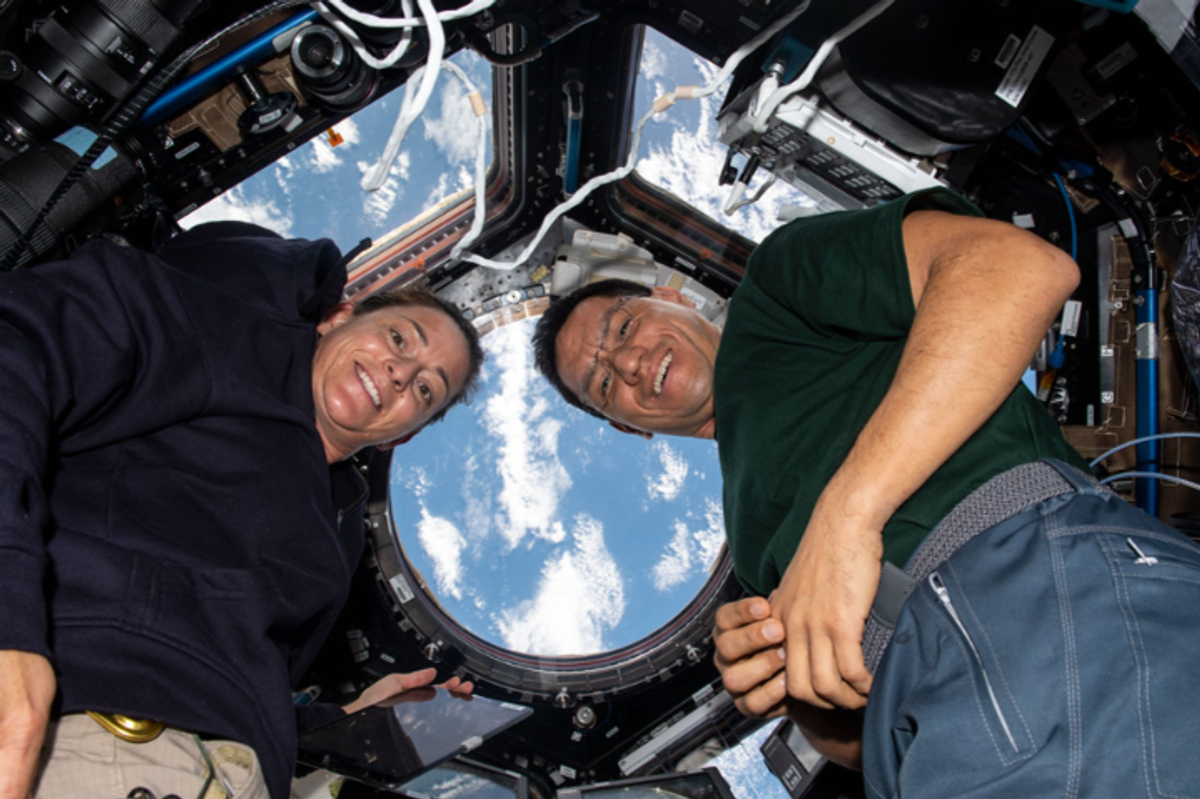In the '80s, NASA started choosing astronauts for long-term missions based on their laugh
Of all the traits they could have, a specific thing about how they laughed got them the job.

NASA astronauts Nicole Mann and Frank Rubio.
Imagine being shot into space on a mission with two other people, and for the next week or so, you’ll be in close quarters where it's impossible to escape one another. Most emotionally healthy people could handle that. But when Ronald Reagan announced in the ‘80s that he wanted to build a space station where astronauts would live together for six months to a year, selecting astronauts who could get along became an essential part of the mission.
Officials at NASA decided that astronauts on long-term missions needed high emotional intelligence to work together without getting on each other’s last nerves for months at a time. They would have to be good at reading others’ emotions, clear communicators, and generally comfortable to be around. For two years, NASA officials couldn’t find a way to determine whether a person had the emotional intelligence to withstand such an unusual social and professional situation.
How NASA chooses astronauts for long-term missions
Author Charles Duhigg recounts the story in his 2024 book, Supercommunicators: How to Unlock the Secret Language of Connection.
@audible Did you know when #NASA interviews #astronauts they pay attention to how they laugh? 🧑🚀🤭 In #CharlesDuhigg's new audiobook, #Supercommunicators, he blends deep research and his trademark storytelling skills to show how we can all learn to identify + leverage the hidden layers that lurk beneath every conversation. Listen now on Audible.🎧
While listening to recordings of astronaut interviews, the psychologist found that the candidates may have similar answers to questions, but they laughed differently. They realized that people whose laughter mirrored the interviewer's showed a higher level of emotional intelligence.
How you laugh is a significant indicator of emotional intelligence
“If I tell a joke and I laugh really loudly, does the candidate laugh back at the same basic energy in the same basic volume? Or do they just politely chuckle? When I tell a sad story, do they try to empathize with me or do they give me some distance?” Duhigg asks.
The psychologist experimented on candidates by wearing a goofy tie, spilling papers during the interview, and laughing really loudly. They noted whether the candidates matched their energy when they laughed to see whether they showed they were interested in building a connection.

“What NASA wants is they want people who they're sending in space who have a high emotional intelligence. And the way that we figure that out, the way that we show that we wanna connect with other people is by matching them, laughing when they laugh, and consoling someone when they're sad,” Duhigg said. Those who did not match the psychologist's emotional energy were seen as having a lower emotional intelligence because they didn't want to engage with the psychologist. Over time, this aloof attitude could create some real tension in the depths of space.
The American Psychological Association studied astronauts' emotional intelligence in a 2018 paper on teamwork in space missions. “Humor, which stems from personality and may be influenced by cultural factors, is often cited as a benefit by spaceflight and analog teams, although sometimes it can cause friction. Crews in HERA [Human Exploration Research Analog] and astronauts aboard the ISS report that appropriate affiliative humor is a key factor in crew compatibility, conflict resolution, and coping,” researchers from the American Psychological Association wrote.
The NASA experiment shows that even in the highly competitive world of the space program, simple, everyday people skills are what can separate those who work on the ground from those who make it into space.

